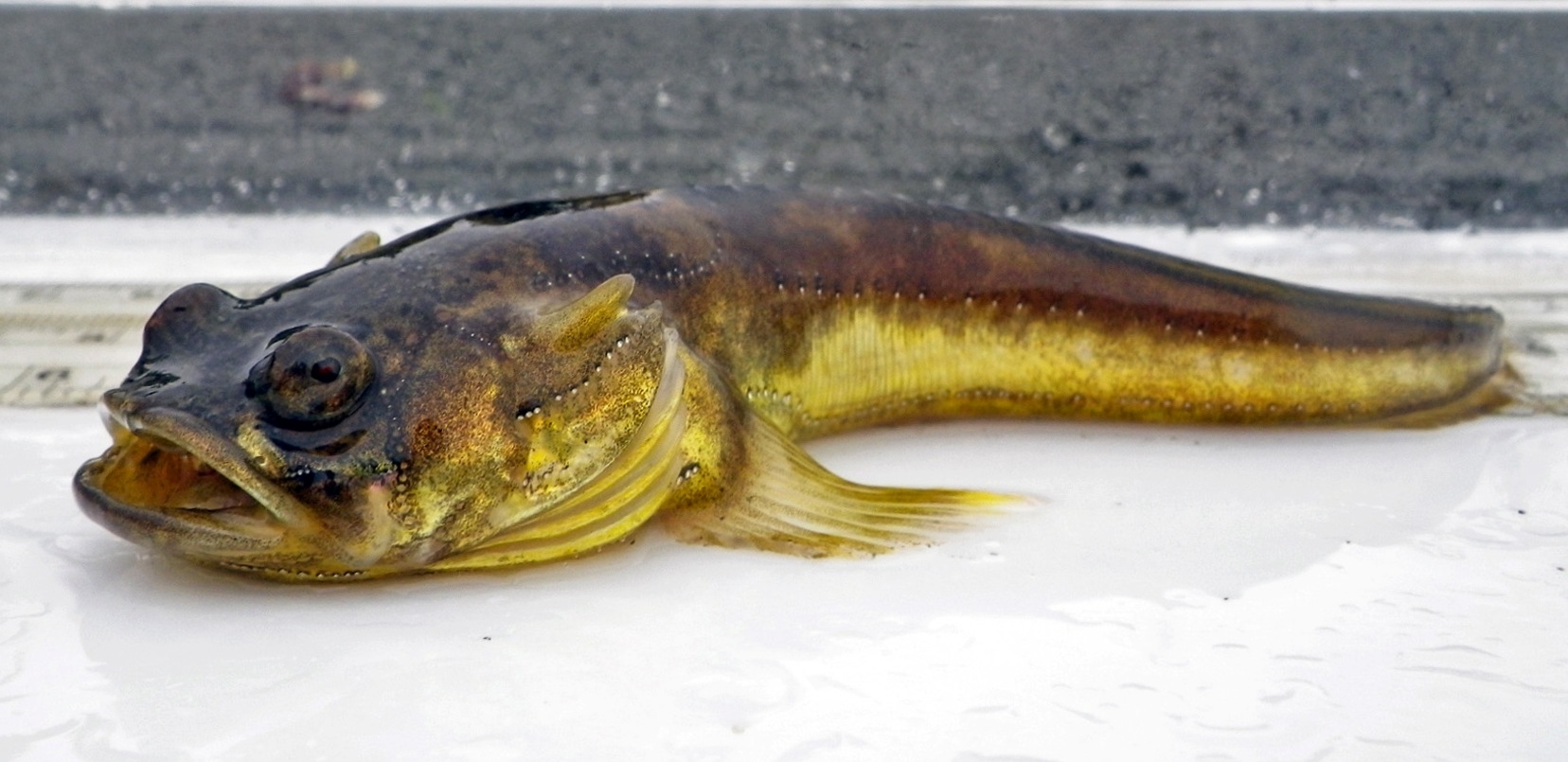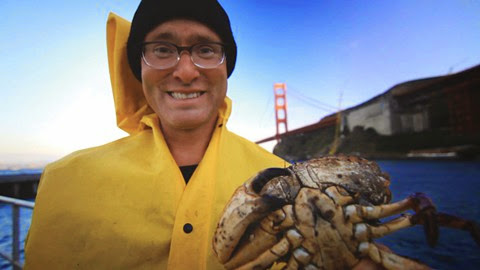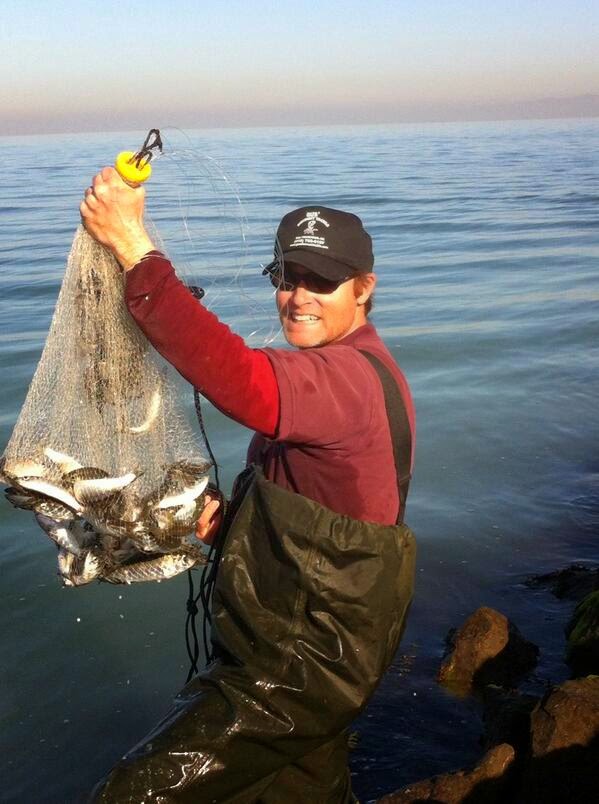San Francisco Treats
Editor’s note: It’s probably OK to refer to Kirk Lombard as eclectic, if even eccentric. One reviewer of Lombard’s book on the greater Bay Areas’s diverse fish populations, The Sea Forager’s Guide to the Northern California Coast, described it this way, “Lombard is a divinely inspired whack job – think (the late, great outside-the-box musician) Frank Zappa meets (ecologist) Aldo Leopold.” That sounds about right for Lombard, a former employee with the Pacific States Marine Fisheries Commission, a dedicated angler and forager who also dabbles in music – he plays tuba in a band named for fellow “whack job” baseball pitcher Rube Waddell, who played in the early 20th century. Lombard and his wife Camilla and their kids, Django and Penelope, are the proprietors of San Francisco’s Sea Forager Seafood, a sustainable, subscription-based seafood delivery service. Lombard’s book – highlighted by his rather sarcastic and dry sense of humor and some funky illustrations from local artist Leighton Kelly – is a detailed breakdown of swimming creatures inhabiting the waters around San Francisco Bay and the Pacific. He is particularly fond of the ecosytem’s tiny baitish – Lombard cherishes the idea of catching his own bait, “because not everybody’s into that,” he says – to the monster salmon, stripers, sturgeon and others that anglers cast lines out for. The following is an excerpt, courtesy of Lombard and published by Heyday.
By Kirk Lombard
California is home to a wide variety of little, weird-looking, mud-loving, bottom-dwelling, so-called baitfish species, and though they may not all be closely related, they tend to share one notable characteristic: complicated and slightly unconventional common names. It’s as if the same eccentric biologist named them all.
There’s the cumbersomely titled Pacific staghorn sculpin, a tough little species that most of us know colloquially as a “bullhead,” though it has nothing to do with the small catfish of the same name. Then there’s the longjaw mudsucker, which sounds more like the insult you’d hurl at the deckhand who drops your 40-pound salmon at boatside than the name of a fish. Next is the plainfin midshipman, a talented toadfish, the Pavarotti of the sewers, also known as the Sausalito buzzerfish. I’m including the yellowfin goby in this group, despite its disappointingly humdrum appellation, because it has become the dominant mudsucker of our region.
Midshipman photo by USGS Western Fisheries Research Center
All of these species are top-quality live bait for larger fish like striped bass, lingcod, halibut, and sharks. “Top quality” in live bait essentially means they do two things:
1. Wriggle and dance when impaled on a hook.
2. Perform these tricks for a comparatively long time.
A Talented Fish
Of all the strangely named baitfish that live in the mudflats, sloughs, and backwaters of our area, the plainfin midshipman(Porichthys notatus) is the star of the lot.
The Where, When, and How
Midshipmen spawn in the spring and summer months, coming inshore from depths of over 1,000 feet and establishing themselves intertidally (typically in muddy bays), under rocks. The best time to find them is in June and July.
Two Types
Typically, when you turn over a rock in the intertidal zone, the midshipman you encounter is the Type I male, doing his matrimonial duty: guarding the eggs and keeping them clean.
What’s a Type I male? Good question. Evidently there are two types of male midshipmen. Here’s what Milton Love, author of that seminal classic, Certainly More Than You Want to Know about the Fishes of the Pacific Coast: A Postmodern Experience, wrote to me in an email correspondence in 2010: “I assume you are aware that there are two kinds of males? Type I guards nests, lures females, and hums. Type II does not guard nests, cannot hum, and waits for a female to lay the eggs, dashes in and sprays sperm on the eggs, and dashes away. The type II male has humongous testes compared to type I.”
Did I mention that Type II males, the ones with the large testes, like to impersonate females? Well, they do. The idea here is that by pretending to be female they can finagle their way into a Type I’s lair, and when he isn’t looking, give any unfertilized eggs a good spritzing of milt.
A Rare Bird
In short, this fish is a rare bird. It’s odd enough that it has photophores (small light-producing “spots”), but the midshipman also has a few other quirks. First, and most famously, it hums (or, as Love points out, some of them hum, some of them grunt, and some growl). In fact, the humming of midshipmen caused quite a furor in Sausalito a few years ago when houseboat owners could not figure out what that terrible buzzing was. Evidently, the buzzing of midshipmen in May and June is so loud the citizenry of Sausalito has a hard time getting to sleep at night. Tsk tsk, poor little Sausalitans.
As if having the voice of a Tuvan throat singer, the uncanny ability to survive at a ridiculous range of depths, and a body covered with lightbulbs were not enough superpowers for one small fish, plainfins come armed with razor-sharp gill spines. Again, this is something I’ve learned about through experience.
The lesson was this: If a midshipman ever slips through my hands again, I will not attempt to catch her as she falls. One day, having dropped a midshipman, I tried to catch her before she hit the water and swam away. Wouldn’t you know, the edge of her gill cover jabbed me beneath my fingernail?
Of course, shoving anything under your fingernail is going to be unpleasant, but a mucous-covered, razor-sharp gill spine is I think among the more unpleasant of things. Suffice to say, the rest of that particular day was like Inquisition torture camp and I now handle midshipmen with caution, reverence, and the type of respect that a dangerous opponent can inspire in a baitman.
Buttons
If you are wondering how the midshipman got its unwieldy name, wonder no more. The photophores on the belly evidently reminded someone of the buttons on a naval cadet’s jacket.
Livin’ the Life o’ Riley
When used as bait, midshipmen stay alive almost as long as bullheads – the measure of toughness in a fish. They squirm, writhe, dance and hum. If you’re lucky, and they’ve been eating a luminescent planktonic arthropod known as Vargula hilgendorfii, they may even light up for you – though this will only camouflage them to a halibut looking up from below. In any case, given all these attractive qualities, it’s a wonder so few people actually use midshipmen for bait. Perhaps I’m not the only person out there who has sentimental feelings for this species.
When you consider that the Type I male spends several months working his butt off, nurturing the eggs, keeping them clean and free of debris, while the Type II male and the female are off living the life of Riley, it’s kind of hard to justify flipping the stone over, abducting the midshipman, and destroying the nest. And when you think that these creatures travel from the depths of the ocean (more than 1,000 vertical feet), having survived all the hazards California might offer a tiny fish – whales, lingcod, cormorants, sea lions, sharks, skates, rays, sturgeon, striped bass, drag nets, toxic waste, you name it – only to be ripped from a muddy hole near SFO when the finish line (spawning, that is) was so near; why, it could almost make a baitman cry.
Almost, but not quite. The thought of the monster fish I’m going to catch using live midshipmen for bait usually squashes my sentimental tendencies. You see them squirming and writhing at the end of your line and you’re the one that gets hooked. There is simply no way to ignore the lunker potential of a big midshipman. And considering how aggressively the local predatory fish tend to hit a squirmy live bait, it’s hard, when you find yourself looking at that vivacious little midshipman, to think he’s not going to catch you a big halibut, or a striper, or a ling.
The Death Song Of The Toad Fishes
I’m not sure why, but leopard sharks really like midshipmen, and for a halibut (or anything else) to take your offering of one, it’s going to have to get in line behind every leopard shark inhabiting the spot where you’re fishing. My last time out on my kayak I caught about half-a-dozen sharks on a single plainfin. He couldn’t seem to stay in the water for five minutes before a leopard shark would slam him and start dragging me into the shipping lanes – and they seemed to like him better dead and chewed than alive and squirming.
As anyone who kayak fishes can confirm, however fun leopard sharks are to fight, they are a royal pain in the arse to unhook. Especially the big ones, on a windy day, with a strong outgoing tide, on a 10-foot sit-on-top kayak. But the strange thing was, everywhere I went that day, it was the same. Along rocky shoreline. Under the piers. Out in the open water: leopard shark after leopard shark after leopard shark. It was as if they were following me.
They were.
After fishing for two hours with that one midshipman, I pulled in my live-bait bucket (which usually trails behind me on a rope as I drift) and decided to swap out my wildly popular shredded baitfish for a new live one.
I placed the bucket on the kayak, cleaned the grim remnants of the first midshipman off my hook, and suddenly noticed that the boat was buzzing.
The midshipmen, their nests destroyed, their eggs uprooted, their lives about to be forfeit to the uncaring jaws of a sluggish bottom dweller, were singing. I held the bucket to my ear. What was this song? How often had they sung it? In the depths of the sea? In the polluted sluices of Stege Marsh? In the yuppie flats of Tiburon? Was it their national anthem? Their rembetika? Their blues? After a few moments I realized what I was listening to – it was the death song of the toadfishes.
I sat there for a while, staring out at the container ships, listening to this melancholy, monotonal death song, feeling, I suppose, not unlike the Grinch staring down on Whoville before his Yuletide transformation. After a few gut-wrenching moments, my calloused fisherman’s heart swollen to thrice its usual size, I paddled to shore and dumped the remaining midshipmen back into the turbid waters from whence they came.
I have little doubt that a sizable school of leopard sharks had been following my kayak all day. It was not a bait bucket, but a leopard shark dinner bell that I’d been dragging behind me.
I guess every fisherman has his weakness, his figurative kryptonite. But how can one justify destroying their nests and skewering their remarkable little bodies, just to waste them on leopard sharks? If you find that they’re great for halibut or lings, stripers or seabass – maybe. But leopard sharks? Thanks, I’ll stick to squid. Honestly, I think the problem here is that I know too much about these little buggers to use them for bait. And now, with any luck, so do you. CS
Editor’s note: California Sportsman readers can take 30 percent off the list price by using the coupon code CASM when ordering the book online at heydaybooks.com. The author’s seafood business, Sea Forager, can be found at seaforager.comand facebook.com/seaforagerseafood










